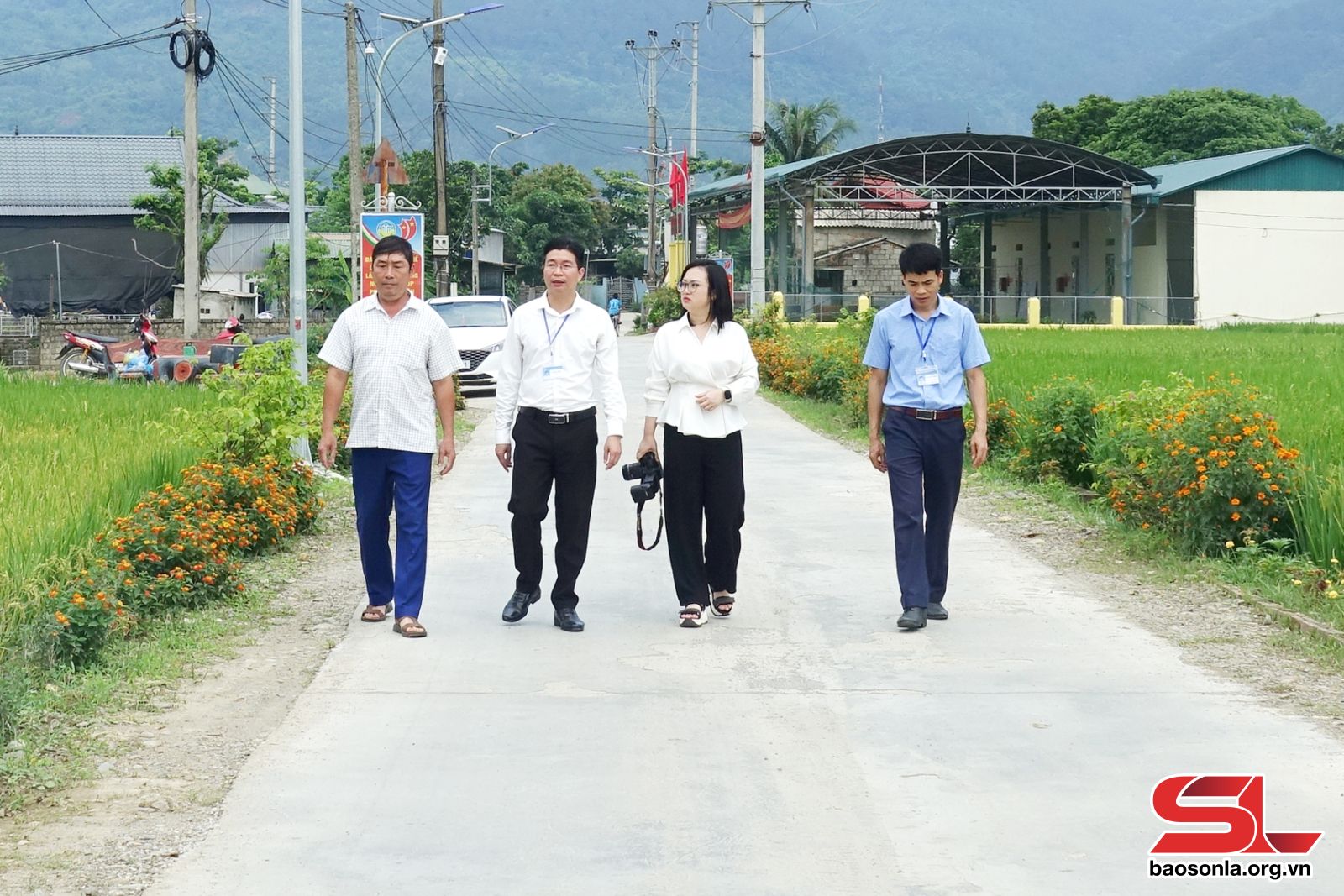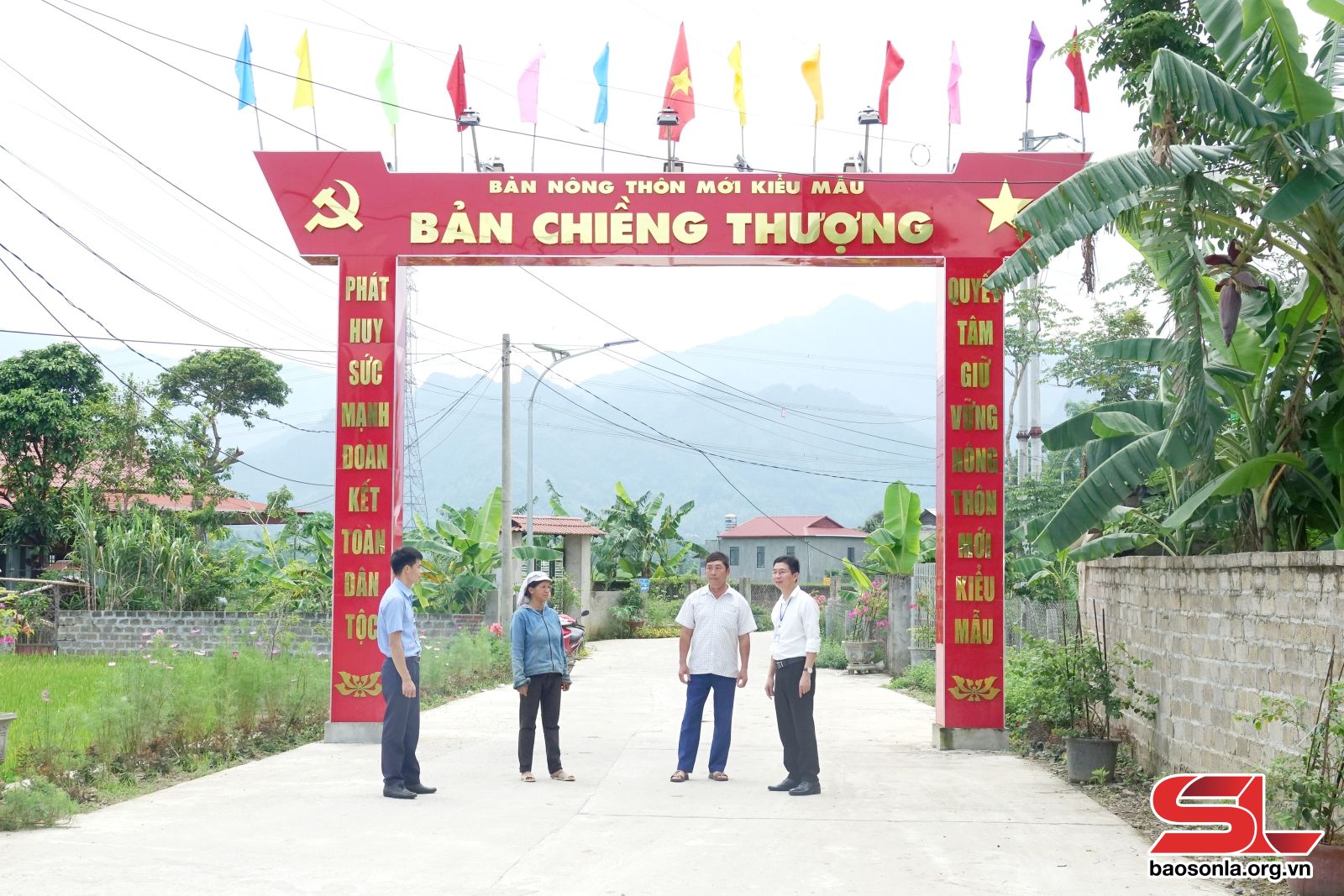
Intra-hamlet and inter-hamlet roads in Chieng Thuong, Quang Huy commune, Phu Yen district, have been upgraded and expanded.
Quang Huy commune’s Chieng Thuong, the second hamlet chosen by Phu Yen district to become a model new-style rural area for its living environment, has seen substantial progress. Local authorities and the hamlet management board have encouraged residents to adopt sustainable production practices. Currently, 20 hectares of paddy fields there have been converted to organic farming, resulting in better environmental protection due to the absence of chemical pesticides. This shift has boosted both productivity and product value by over 20% compared to traditional methods. Locals have joined hands to concrete intra-hamlet roads, construct a cultural house, and plant flowers along the roadsides, creating a green, clean, and beautiful landscape. In early 2024, the hamlet was officially recognised as a model new-style rural area.
After winning the new-style rural area status last year, Mai Tien hamlet in Muong Bon commune, Mai Son district, aims to become a model new-style rural area in 2024.
Pham Ngoc Dau, Secretary of the Party cell and head of Mai Tien hamlet, said the hamlet management board has encouraged locals to establish a cooperative for safe vegetable production. Utilising an automatic irrigation system and adhering to the VietGAP standards, the cooperative avoids excessive use of pesticides and ensures proper withdrawal periods, aligning with model new-style rural area criteria. Currently, nearly 10 hectares of vegetables and root crops in the hamlet are grown under VietGAP standards, and the locality has met 19 out of 25 criteria set for a model new-style rural area.
In 2024, Mai Son aims to establish 10 hamlets that meet new-style rural area standards, eight of them as model ones. The district has directed communes to continue encouraging residents to actively apply scientific and technical advancements to production, contributing to creating a green, clean, and beautiful environment, and protect the ecological environment, gradually improving living standards.
A new-style rural hamlet must meet basic requirements, such as having an average income per capita equal to or higher than the average income of a new-style rural commune at the time of evaluation; over 80% of rural roads being paved; 100% of roads having drainage systems; and 100% of households having hygienic bathrooms and toilets. For a model new-style rural hamlet, certification is only granted after achieving the new-style rural status and meeting the criteria in at least one of the following five areas: organisation of production and rural economic development, rural tourism, rural culture, landscape and environmental quality, and rural digital transformation.

Chieng Thuong hamlet in Quang Huy commune, Phu Yen district, was officially recognised as a model new-style rural area in early 2024.
After more than two years of implementing the programme, the entire province now has 57 new-style rural hamlets and sub-zones, of them 17 achieving the model status. By 2030, the goal is to reach a total of 84 new-style rural hamlets, with 42 as model ones.
Ha Nhu Hue, Director of the provincial Department of Agriculture and Rural Development and head of the provincial Coordination Office for the New-Style Rural Development Programme, said to help localities reach these goals, the province is not only utilising funds from the National Target Programme on New-Style Rural Building but is also integrating funding from the National Target Programmes on Socio-Economic Development in Ethnic Minority-Inhabited and Mountainous Areas, and the Sustainable Poverty Reduction Programme. Additionally, various provincial departments are tasked with overseeing specific criteria, working closely with districts, regularly visiting localities, and providing guidance to address challenges in establishing both new-style rural and model new-style rural hamlets.
The outcomes have not only given a facelift to hamlets but have also sparked a significant shift from awareness to action across the political system and among residents. These efforts are creating exemplary models in methods and implementation, helping to effectively carry out the New-Style Rural Area Building Programme.


















.jpg)




You have 500/500 characters left
Please enter 5 or more characters!!!